
I take a breath full of crisp, chilly air, dig my feet into the greenest grass I've ever seen, and bend down to open the tarp and unearth the wild world below. It's hard to spot the fish in the massive black pool, but soon the eyes acclimate to reveal the outline of one fish, then two, then three. Suddenly, scores of the dark bodies come swimming up to the surface to see what all the commotion is about. Dozens of people are hovering—cameras and iPhones in hand—to get a chance to see the unlikely celebrities: slimy, prehistoric-looking halibut that have been farmed using sustainable practices.
While many people eschew farmed fish in favor of the more romantic wild-caught option, here, on a cloudy day in the middle of a fish farm at the shores of Sognefjord in Southwestern Norway, I'm starting to see the romance in this type of fishing too.
Feeding a growing world
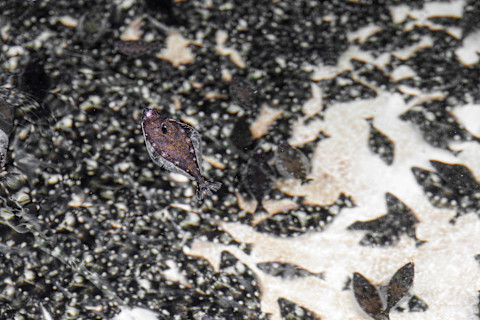
Aquaculture, or fish farming, has existed in some form for millennia but only reached industrial scale in the last 40 years. In that time, the industry has suffered its share of bad press: Large-scale farms around the world have been caught using a flurry of noxious antibiotics, swarms of nonnative fish have escaped their pens and wreaked havoc on local populations, and the people tending to these fish have been overworked and underpaid. Across many parts of the world, the United States included, these stories have left a bad taste in consumers' mouths.
However, as time goes on and the human population grows dramatically, the need to grow more food—and grow it fast—gets more dire. We don't have much open ocean left to fish, and we're looking for other ways to feed the estimated 9.8 billion people who will live on earth by 2050. Aquaculture could be one solution, if it's done correctly.
Nearly every coastal country in the world has space that is suitable1 for aquaculture development. And farming fish is usually (though it depends on the type of fish grown and operation) easier on the planet than farming animals on land. That's because fish naturally school and don't mind confined conditions, plus smaller fish don't require much food. To grow 1 kilogram of small saltwater fish, you'd need about 1 kilogram of feed, while a cow would require 9 kilograms of feed and thousands of gallons of water. Not to mention, fish are a healthy, low-fat source of protein.
"It’s all just so logical—you don’t need to be a scientist to figure this out. Food can be plentiful if we do it right," says Mike Velings, the CEO of Aqua-Spark, an aquaculture investment fund. Alongside wife and business partner Amy Novogratz, he backs a handful of companies shaping a more sustainable industry, from feed producers to entire farms. "The aquaculture industry has been terrible at telling their story so far, and we're all paying the price for it. There are a lot of challenges, but we’re getting more optimistic by the day."
The case for aquaculture
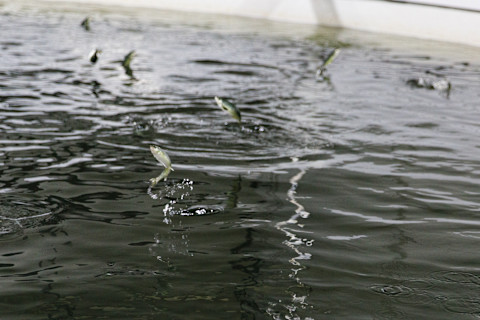
One of the operations they support is the aforementioned Norwegian halibut farm, Sogn Aqua. The first sustainable land-based halibut farm in the world, it's a perfect example of the rapidly changing aquaculture industry.
Started by college friends Jan Arne Brekke, a third-generation fish farmer, and Ole-Kristian Hess-Erga, a microbiologist, the farm seeks to recreate fishes' natural environment. Halibut are large bottom-feeders that thrive in cold, deep waters, which makes them difficult (and often environmentally damaging) to catch in the wild. But Jan and Ole-Kristian found a way to pump water from 100 meters down a nearby fjord into a land-based pen where they can control the water conditions. They know exactly how the 300,000 fish they grow at a time lived, what they ate, and what temperature they were grown in.
Both Jan and Ole-Kristian grew up in Norway and exude a connection to the impossibly beautiful land the farm sits on. Their catch, an in-demand product in upscale European restaurants known for its rich taste and silky texture, is named Glitne, inspired by Norwegian mythology.
Looking forward, the duo wants to continue to make their already eco-operation more sustainable. One way they're looking to do so is by using alternative feed ingredients such as algae or microbial derived feed instead of relying on fish meal that needs to be taken from the wild. "We are not satisfied. We want to do more," Ole-Kristian says from a small office on his farm's perimeter. "We need to be even better than we are now."
This constant thirst for improvement defines the aquaculture industry. "There’s so much innovation and so much excitement," Novogratz of Aqua-Spark explains. "It’s like being in this major startup lab, and you're all looking for different ways to solve the same problem."
Getting consumers on board
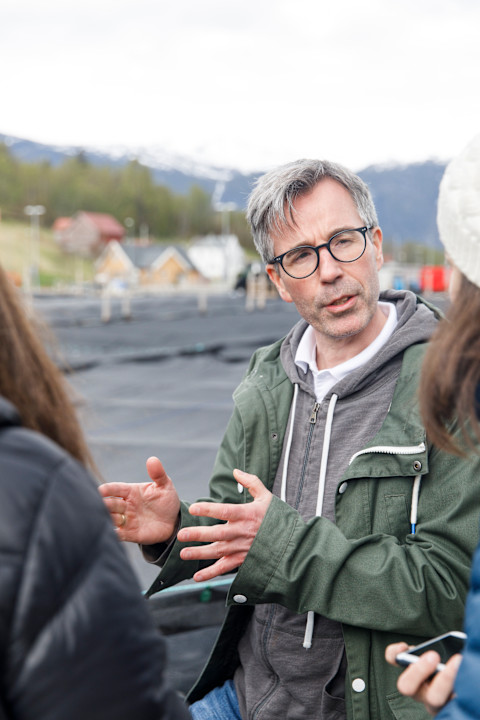
With innovators like Jan and Ole-Kristian working behind the scenes, more brands are starting to tell their story in delicious ways. For instance, Love the Wild, a line of frozen farmed fish dishes sold in retailers across the country including Whole Foods, is serving up dishes like Striped Bass With Roasted Pepper Almond Sauce and Barramundi With Mango Sriracha Chutney that can be prepared in under 30 minutes. The company just reached $3 million in series A funding (Leonardo DiCaprio is one investor who was drawn to the company's potential to feed a growing world in an environmentally responsible way) and seeks to add more visibility to aquaculture by packaging it into a tasty, convenient product.
"People hear things [about farmed fish] that scare them off a little bit. But at the end of the day, they make purchase decisions based on taste. A lot of people never try farmed fish because they think it has to taste terrible, but when they see that it actually tastes good, they're open to having that conversation," co-founder and CEO Jacqueline Claudia tells mbg.
All of the farms that Love the Wild sources from meet the brand's sustainability standards: They are working toward using less wild-caught fish in their feed, they respect their surrounding environment, and they're constantly pushing the needle with new technologies. Love the Wild shares stories from these farms to boost transparency and give consumers a look into a previously faceless industry.
"Consumers today have an increasing want for transparency, and the seafood supply chain has been very opaque for a really long time. When you just say this is farmed fish, people picture some gross, crowded factory run by machines," Claudia says of why it's important for her to share educational materials like aquaculture tours and Q&A's with farmers. "These people are proud of what they do, and they're not trying to hide."
Thrive Market is another popular marketplace shining a light on sustainable fishing. The online healthy food purveyor included farmed barramundi in its new line of frozen fish, choosing it because it is much less calorically expensive to get to weight.
At the end of the day, eating responsibly and healthily means knowing where your food comes from and how it was grown. In a world that is increasingly seeking transparency, farmed fish makes more and more sense.
A tasty new standard
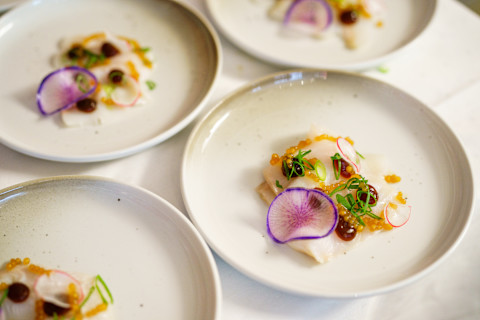
As with any other industry, there are, of course, examples of harmful fish farming practices, too, so it's important for shoppers to educate themselves on what they're buying. One way is to consistently shop with brands that you trust to do the research, like Love the Wild or Thrive, and the other is to be your own investigator.
"With most social change issues, education is the first step," Julie Packard, the executive director of Monterey Bay Aquarium, a nonprofit dedicated to protecting the oceans, tells mbg. "There's been a huge increase of awareness in the fact that the ocean does not have endless resources. We can overfish, and entire fisheries can crash down to commercial extinction. We have to be more thoughtful about it and ask how we can make aquaculture development happen in a way that's good for the ocean and good for communities."
The Aquarium's Seafood Watch mobile app is a fantastic resource for American consumers who want to quickly learn more about the local fish section in their grocery store. It has information on 85 percent of America's seafood market (90 percent of which is imported from other countries), farmed and wild-caught, ranking it on a scale of sustainability. If you're in a pinch, she says that farmed shellfish like mussels are usually the most eco-friendly bet since they're filter feeders that actually clean the water around them.
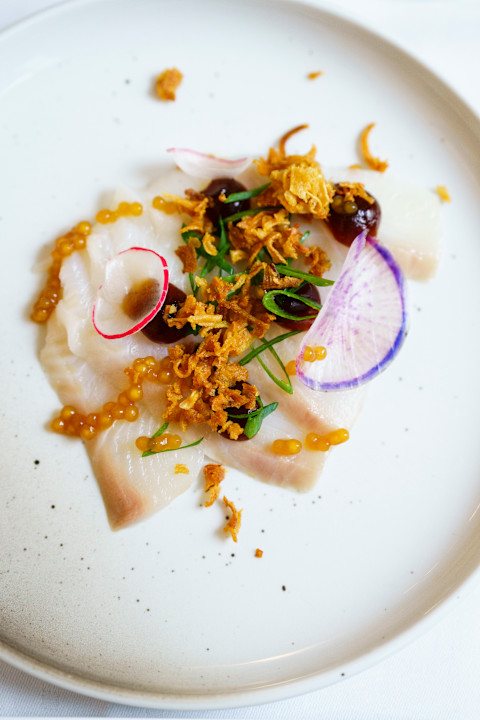
If you're eating seafood in restaurants, take a moment to ask the waiter where your fish is coming from and how it was raised. If enough diners do so, chefs are bound to start paying more attention to sourcing. Signs of progress in this arena are everywhere: Red Lobster, the world's largest seafood restaurant chain, recently teamed up with Seafood Watch to clean up its practices, and chefs from Norway to New York are putting time into serving a curated mix of farm-raised and wild-caught.
In Bergen, Norway, chef Christopher Haatuft serves up Glitne halibut at his fine dining restaurant, Lysverket, to show consumers what responsibly raised fish actually looks and tastes like. "When you say this fish is from a fish farm, there are no visuals for that. People don’t see that on Chef’s Table," the chef, whose résumé includes stints at Blue Hill and Per Se, says from his restaurant's dining room. "I think chefs and restaurants that have an audience have an obligation to identify the good practitioners of aquaculture and lift them up."
Across the world in New York City, acclaimed seafood restaurants like Oceana are serving a mix of wild-caught and farmed fish too. "In order to end up with the tastiest fish possible, I check to see how the fish were raised, including their diet and environment," executive chef Bill Telepan tells mbg. "These factors play a big part in the fish’s final flavor, so I always check the environmental impact of the farm itself."
The next generation of farm-to-table
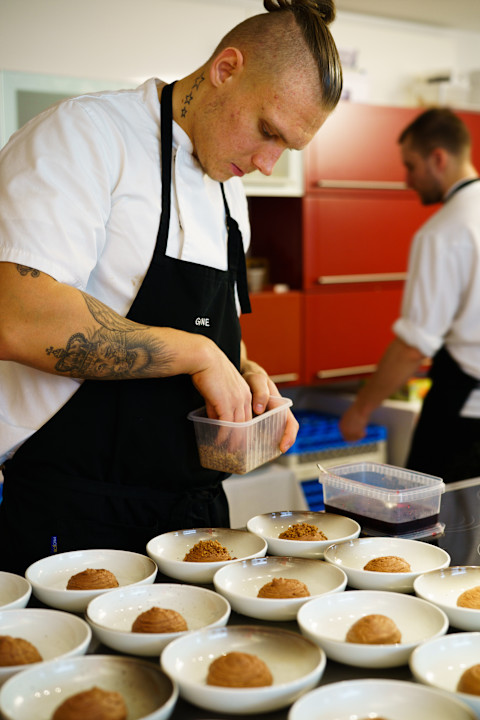
It's chefs like these who are leaning into the aquaculture industry for a sustainable and delicious product that Sogn Aqua is looking to partner with for a new type of farm-to-table concept: They're hoping to eventually host chefs in their secluded Norwegian farm to prepare fresh fish for curious visitors. They've also teamed up with architect Todd Saunders to one day re-imagine fish farms as community gathering spaces.
Saunders' rendering of their farm looks more like an apple orchard that blends seamlessly into the surrounding fjords. He envisions it as a place where people can walk their dog in the mornings and gather to enjoy a nice meal set against a beautiful backdrop at night. "If you approach these things with a bit of care and work together, we can make something new," he says of this next generation of fish farms. "You could turn things upside down if you put in the energy."
